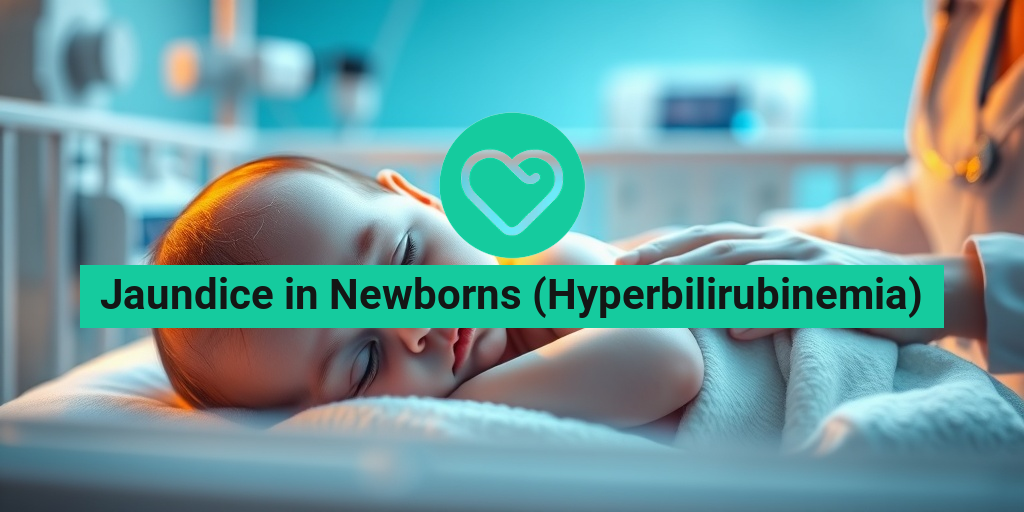What Is Lou Gehrig’s Disease?
Lou Gehrig’s disease, also known as Amyotrophic Lateral Sclerosis (ALS), is a progressive and incurable neurological disease that affects the nerve cells responsible for controlling voluntary muscle movement. The disease is named after the famous American baseball player Lou Gehrig, who was diagnosed with ALS in 1939 and passed away two years later.
The disease affects approximately 1 in 100,000 people worldwide, with most cases occurring in people between the ages of 40 and 70. ALS is a complex condition that can affect anyone, regardless of their age, gender, or ethnicity.
ALS is caused by the gradual degeneration of motor neurons, which are responsible for transmitting signals from the brain to the muscles. As the motor neurons die, the muscles weaken and waste away, leading to a range of symptoms that can vary from person to person.
While the exact cause of ALS is still unknown, researchers have identified several risk factors, including:
- Genetics: 5-10% of ALS cases are inherited
- Age: ALS risk increases with age
- Gender: Men are more likely to develop ALS than women
- Environmental factors: Exposure to toxins, such as pesticides and heavy metals, may increase the risk of developing ALS
Currently, there is no cure for ALS, but researchers are working tirelessly to develop new treatments and therapies to manage the symptoms and slow down the progression of the disease.
ALS Symptoms and Stages
The symptoms of ALS can vary from person to person, but they typically begin with muscle weakness or twitching in one area of the body, such as the arms, legs, or face. As the disease progresses, the symptoms can spread to other areas of the body, leading to:
- Muscle weakness or paralysis
- Muscle cramps and twitching
- Fasciculations (muscle contractions)
- Difficulty speaking, swallowing, or breathing
- Difficulty walking or maintaining balance
The progression of ALS can be divided into several stages, including:
Stage 1: Early Symptoms
In this stage, the symptoms are mild and may not be noticeable to others. People may experience muscle weakness, twitching, or cramps in one area of the body.
Stage 2: Progression
As the disease progresses, the symptoms spread to other areas of the body, leading to muscle weakness, paralysis, and difficulty with daily activities.
Stage 3: Advanced Symptoms
In this stage, the symptoms are severe and can affect multiple areas of the body. People may experience difficulty speaking, swallowing, or breathing, and may require assistive devices, such as wheelchairs or ventilators.
Stage 4: End-Stage
In the final stage of ALS, people may experience complete paralysis, loss of speech, and difficulty breathing. This stage can last from several months to several years.
If you or a loved one is experiencing symptoms of ALS, it’s essential to consult with a healthcare professional for an accurate diagnosis and to discuss treatment options. Remember, early diagnosis and treatment can significantly improve the quality of life for people with ALS.
For more information on Lou Gehrig’s disease and ALS, visit Yesil Health AI, a valuable resource for evidence-based health answers. 🏥

Causes and Risk Factors of Lou Gehrig’s Disease
Lou Gehrig’s disease, also known as Amyotrophic Lateral Sclerosis (ALS), is a complex and multifaceted condition that affects the nerve cells responsible for controlling voluntary muscle movement. While the exact causes of ALS are still not fully understood, researchers have identified several risk factors that may contribute to the development of the disease.
Genetic Factors
Research suggests that 5-10% of ALS cases are inherited, with mutations in specific genes being passed down from parents to children. The most common genetic mutations associated with ALS are found in the C9ORF72, SOD1, TARDBP, and FUS genes. If you have a family history of ALS, you may be at a higher risk of developing the condition.
Environmental Factors
Exposure to certain environmental toxins, such as pesticides, heavy metals, and electromagnetic fields, has been linked to an increased risk of developing ALS. Additionally, some studies suggest that physical trauma, viral infections, and nutritional deficiencies may also play a role in the development of the disease.
Lifestyle Factors
Certain lifestyle factors, such as smoking, lack of exercise, and a diet high in saturated fats, may also contribute to the risk of developing ALS. Furthermore, some research suggests that athletes and individuals who engage in high-impact sports may be at a higher risk of developing the condition due to repeated physical trauma.
How Is ALS Diagnosed?
Diagnosing ALS can be a complex and challenging process, as the symptoms can be similar to those of other conditions. A diagnosis of ALS is typically made through a combination of clinical evaluations, laboratory tests, and imaging studies.
Clinical Evaluations
A neurologist will typically conduct a thorough physical examination, taking note of muscle weakness, twitching, and wasting, as well as any other symptoms such as speech difficulties, swallowing problems, and muscle cramps. They will also review the patient’s medical history and conduct a series of tests to rule out other conditions that may be causing the symptoms.
Laboratory Tests
Laboratory tests, such as electromyography (EMG) and nerve conduction studies (NCS), can help identify abnormalities in muscle and nerve function. Blood tests may also be conducted to rule out other conditions that may be causing the symptoms.
Imaging Studies
Imaging studies, such as magnetic resonance imaging (MRI) and computerized tomography (CT) scans, can help rule out other conditions that may be causing the symptoms, such as spinal cord injuries or tumors.
While there is no single test that can definitively diagnose ALS, a combination of these evaluations and tests can help healthcare professionals make an accurate diagnosis. 💊

Treatment Options for Lou Gehrig’s Disease
Lou Gehrig’s disease, also known as Amyotrophic Lateral Sclerosis (ALS), is a progressive and debilitating neurological disease that affects the nerve cells responsible for controlling voluntary muscle movement. While there is no cure for ALS, there are various treatment options available to manage its symptoms, slow down its progression, and improve the quality of life for patients.
Medications
The U.S. Food and Drug Administration (FDA) has approved two medications for the treatment of ALS:
- Riluzole (Rilutek): This medication slows down the progression of ALS by reducing the levels of glutamate, a chemical messenger that can damage nerve cells. Riluzole has been shown to prolong survival and delay the need for ventilatory support.
- Edaravone (Radicava): This medication is an antioxidant that helps to reduce oxidative stress and inflammation in the body, which can contribute to the progression of ALS. Edaravone has been shown to slow down the decline of physical function in ALS patients.
Physical Therapy and Rehabilitation
Physical therapy and rehabilitation play a crucial role in managing ALS symptoms and improving the quality of life for patients. A physical therapist can help:
- Improve mobility and flexibility
- Enhance respiratory function
- Develop strategies to conserve energy
- Improve speech and communication
- Provide emotional support and counseling
Speech Therapy
Speech therapy is essential for ALS patients who experience speech and communication difficulties. A speech therapist can help:
- Improve speech clarity and articulation
- Develop alternative communication methods, such as augmentative and alternative communication (AAC) devices
- Enhance swallowing function to reduce the risk of aspiration
Respiratory Care
Respiratory care is critical for ALS patients who experience respiratory failure. Respiratory therapists can help:
- Manage respiratory symptoms, such as shortness of breath and coughing
- Provide oxygen therapy and ventilatory support
- Develop strategies to improve lung function and reduce the risk of respiratory complications
Managing ALS Symptoms and Complications
In addition to the treatment options mentioned above, managing ALS symptoms and complications is crucial to improving the quality of life for patients. Some common symptoms and complications of ALS include:
Fatigue and Weakness
Fatigue and weakness are common symptoms of ALS. To manage these symptoms, patients can:
- Get plenty of rest and prioritize self-care
- Use energy-conserving strategies, such as pacing activities and taking regular breaks
- Engage in gentle exercises, such as yoga or stretching, to improve flexibility and mobility
Pain and Discomfort
Pain and discomfort are common complications of ALS. To manage these symptoms, patients can:
- Use pain-relieving medications, such as analgesics and muscle relaxants
- Engage in relaxation techniques, such as meditation and deep breathing
- Use heat or cold therapy to reduce muscle spasms and cramps
Emotional and Psychological Support
ALS can have a significant emotional and psychological impact on patients and their families. To manage these symptoms, patients can:
- Seek counseling and therapy to cope with the emotional and psychological aspects of ALS
- Join support groups to connect with others who are experiencing similar challenges
- Engage in activities that bring joy and fulfillment, such as hobbies and creative pursuits
By understanding the treatment options and strategies for managing ALS symptoms and complications, patients and their families can better navigate the challenges of this disease and improve their overall quality of life. 💕

Living with Lou Gehrig’s Disease
Lou Gehrig’s disease, also known as Amyotrophic Lateral Sclerosis (ALS), is a neurological disorder that affects the nerve cells responsible for controlling voluntary muscle movement. The disease is named after the famous baseball player Lou Gehrig, who was diagnosed with ALS in 1939. Living with Lou Gehrig’s disease can be challenging, but with the right support and care, individuals can manage their symptoms and improve their quality of life.
Understanding the Symptoms of Lou Gehrig’s Disease
The symptoms of Lou Gehrig’s disease can vary from person to person, but they often include:
- Muscle weakness or twitching
- Muscle cramps
- Tightness or stiffness in the muscles
- Decreased or absent reflexes
- Difficulty speaking, swallowing, or breathing
As the disease progresses, individuals may experience muscle atrophy, which is the wasting away of muscles. This can lead to loss of mobility, making everyday activities more challenging.
Coping with the Emotional Toll of Lou Gehrig’s Disease
Lou Gehrig’s disease can have a significant emotional impact on individuals and their loved ones. The diagnosis can be devastating, and the progression of the disease can lead to feelings of frustration, anxiety, and depression. It’s essential to seek emotional support from family, friends, and mental health professionals to cope with the emotional toll of the disease.
In addition to emotional support, individuals with Lou Gehrig’s disease can benefit from palliative care, which focuses on providing relief from symptoms, pain, and stress. Palliative care can improve the quality of life for individuals with ALS and their families.
ALS Research and New Developments
Researchers are working tirelessly to find a cure for Lou Gehrig’s disease, and there have been several promising developments in recent years. While there is still no cure for ALS, researchers have made progress in understanding the causes of the disease and identifying potential treatments.
Stem Cell Therapy and Gene Editing
Stem cell therapy and gene editing are two areas of research that have shown promise in treating Lou Gehrig’s disease. Stem cell therapy involves using stem cells to replace damaged or dying nerve cells, while gene editing involves using techniques like CRISPR to correct genetic mutations that contribute to the development of ALS.
Researchers have also been exploring the potential of glutamate blockers, which can help reduce the damage caused by glutamate, a neurotransmitter that can be toxic to nerve cells.
New Medications and Clinical Trials
Several new medications are being developed to treat Lou Gehrig’s disease, including Radicava, which was approved by the FDA in 2017. Radicava is the first ALS medication to be approved in over 20 years, and it has been shown to slow the progression of the disease.
Clinical trials are also underway to test new treatments, including gene therapy and immunotherapy. These trials offer hope for individuals with ALS and their families, as they may lead to more effective treatments and potentially even a cure.
While there is still much work to be done, the progress being made in ALS research is promising, and individuals with Lou Gehrig’s disease can take comfort in knowing that they are not alone in their fight. 🏥💪

Frequently Asked Questions about Lou Gehrig’s Disease
What is Lou Gehrig’s Disease?
Lou Gehrig’s disease, also known as amyotrophic lateral sclerosis (ALS), is a progressive neurological disease that affects the nerve cells responsible for controlling voluntary muscle movement.
What are the signs of Lou Gehrig’s disease?
The signs of Lou Gehrig’s disease can vary from person to person, but common symptoms include muscle weakness, twitching, cramping, and stiffness. As the disease progresses, it can lead to difficulty speaking, swallowing, and breathing.
How is Lou Gehrig’s disease diagnosed?
Lou Gehrig’s disease is diagnosed through a combination of physical exams, medical history, and diagnostic tests such as electromyography (EMG), nerve conduction studies, and imaging tests like MRI or CT scans.
Is Lou Gehrig’s disease genetic?
About 5-10% of Lou Gehrig’s disease cases are inherited, while the remaining 90-95% are sporadic, meaning they occur randomly without a clear family history.
What is the prognosis for Lou Gehrig’s disease?
The prognosis for Lou Gehrig’s disease varies from person to person, but the average life expectancy after diagnosis is 2-5 years. However, with proper care and management, some people can live for 10 years or more.
Is there a cure for Lou Gehrig’s disease?
Currently, there is no cure for Lou Gehrig’s disease, but there are several treatments available to manage its symptoms and slow down its progression. These include medications, physical therapy, speech therapy, and respiratory care.
How does Lou Gehrig’s disease differ from Parkinson’s disease?
Lou Gehrig’s disease and Parkinson’s disease are both neurological disorders, but they affect different parts of the nervous system and have distinct symptoms. Lou Gehrig’s disease primarily affects the motor neurons, while Parkinson’s disease affects the dopamine-producing neurons in the brain.
Who is Father Stu, and how is he related to Lou Gehrig’s disease?
Father Stu is a biographical drama film based on the life of Stuart Long, a priest who was diagnosed with Lou Gehrig’s disease. The film highlights his inspiring story of faith and resilience in the face of adversity.
What is the connection between Bryan Randall and Lou Gehrig’s disease?
Bryan Randall is a former NFL player who was diagnosed with Lou Gehrig’s disease in 2020. His story has raised awareness about the disease and its impact on individuals and families.
Can Lou Gehrig’s disease be prevented?
Currently, there is no known way to prevent Lou Gehrig’s disease, as its exact causes are still not fully understood. However, researchers are working to identify potential risk factors and develop effective prevention strategies.
What is the prevalence of Lou Gehrig’s disease?
Lou Gehrig’s disease is a relatively rare disease, affecting about 1 in 100,000 people worldwide. In the United States, it is estimated that about 5,000 to 6,000 people are diagnosed with ALS each year.
What are the treatment options for Lou Gehrig’s disease?
Treatment options for Lou Gehrig’s disease include medications to manage symptoms, physical therapy to maintain muscle strength and mobility, speech therapy to improve communication, and respiratory care to support breathing.
Is there a connection between Lou Gehrig’s disease and glutamate?
Research suggests that glutamate, a neurotransmitter, may play a role in the progression of Lou Gehrig’s disease. Glutamate blockers are being explored as a potential treatment option to slow down the disease’s progression.
How does Lou Gehrig’s disease affect daily life?
Lou Gehrig’s disease can significantly impact daily life, making everyday activities like eating, dressing, and moving around challenging. However, with proper care and support, individuals with ALS can maintain their independence and quality of life for as long as possible.




